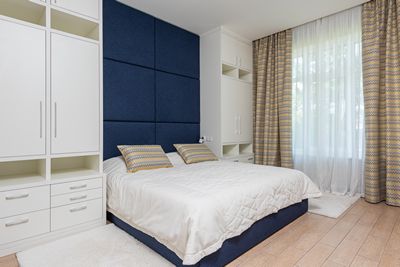
Singapore’s residential real estate market comprises of public housing under the management of the Housing Development Board (HDB) and private real estate. The majority of Singapore residents live in HDB dwellings, known locally as HDB flats. Home ownership plays a crucial role in Singapore’s nation-building strategy, thus the purchase of an HDB flat is subsidized and regulated by the government. The purchase of new HDB dwellings is only for Singapore citizens who fulfill certain criteria; non-citizens are eligible to purchase resale HDB flats and private residential property, including landed property. Singapore’s private residential real estate market consists largely of premium and luxury real estate, which make such properties a popular real estate investment for foreigners.
Commercial and industrial real estate in Singapore
The commercial real estate market, consisting of office, retail, and hospitality properties, suffered declines in occupancy, rent, and income due to the movement restrictions imposed during the COVID-19 pandemic. The work from home mandate has led to increases in vacancy rates of office spaces across all categories in Singapore. Singapore’s circuit breaker measures during COVID-19 also saw sales and footfall shift to suburban malls and away from the prime shopping areas in the city. Coupled with rising e-commerce use, brick-and-mortar retail outlets, and especially department stores have lost a significant share of overall retail sales. Thus, the trade mix in Singapore’s ubiquitous shopping malls is changing, with more food and beverage tenants filling up the retail real estate space.
Industrial real estate, however, has seen robust growth despite the COVID-19 pandemic, with increasing demand for warehouses to hold growing e-commerce inventory, factories for semiconductor manufacturing, and industrial parks for the biomedical and pharmaceutical industries. However, with limited supply, occupancy rates in industrial real estate are expected to remain high.
This text provides general information. Statista assumes no liability for the information given being complete or correct. Due to varying update cycles, statistics can display more up-to-date data than referenced in the text.
Key figures
The most important key figures provide you with a compact summary of the topic of “Real estate in Singapore” and take you straight to the corresponding statistics.
Residential real estate
Number of landed properties in Singapore 2011-2020
Population living in public housing in Singapore 2011-2020
Resident households in condominiums and private apartments Singapore 2011-2020
Commercial real estate
Shopping mall cap rate in APAC 2021, by city
Investment sales in retail Singapore 2018-2020
Median office rentals upon lease commencement Singapore Q1 2018-Q1 2021, by category
Industrial real estate
Rental cost of lab space in leading science cities worldwide 2020, by city
Average industrial data center rents in the APAC region H1 2020, by market
Leading global data center markets ranked by cost of construction 2020
Interesting statistics
In the following 5 chapters, you will quickly find the 30 most important statistics relating to “Real estate in Singapore”.
More interesting topics
Related topics
Dossier on the topic
Residential real estate in Singapore
Singapore’s residential real estate market comprises of public housing under the management of the Housing Development Board (HDB) and private real estate. The majority of Singapore residents live in HDB dwellings, known locally as HDB flats. Home ownership plays a crucial role in Singapore’s nation-building strategy, thus the purchase of an HDB flat is subsidized and regulated by the government. The purchase of new HDB dwellings is only for Singapore citizens who fulfill certain criteria; non-citizens are eligible to purchase resale HDB flats and private residential property, including landed property. Singapore’s private residential real estate market consists largely of premium and luxury real estate, which make such properties a popular real estate investment for foreigners.
Commercial and industrial real estate in Singapore
The commercial real estate market, consisting of office, retail, and hospitality properties, suffered declines in occupancy, rent, and income due to the movement restrictions imposed during the COVID-19 pandemic. The work from home mandate has led to increases in vacancy rates of office spaces across all categories in Singapore. Singapore’s circuit breaker measures during COVID-19 also saw sales and footfall shift to suburban malls and away from the prime shopping areas in the city. Coupled with rising e-commerce use, brick-and-mortar retail outlets, and especially department stores have lost a significant share of overall retail sales. Thus, the trade mix in Singapore’s ubiquitous shopping malls is changing, with more food and beverage tenants filling up the retail real estate space.
Industrial real estate, however, has seen robust growth despite the COVID-19 pandemic, with increasing demand for warehouses to hold growing e-commerce inventory, factories for semiconductor manufacturing, and industrial parks for the biomedical and pharmaceutical industries. However, with limited supply, occupancy rates in industrial real estate are expected to remain high.
This text provides general information. Statista assumes no liability for the information given being complete or correct. Due to varying update cycles, statistics can display more up-to-date data than referenced in the text.
Interesting statistics
In the following 5 chapters, you will quickly find the 30 most important statistics relating to “Real estate in Singapore”.